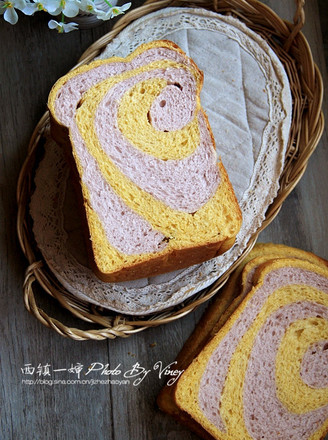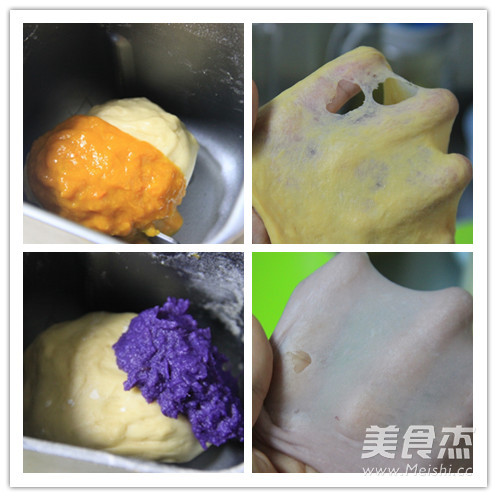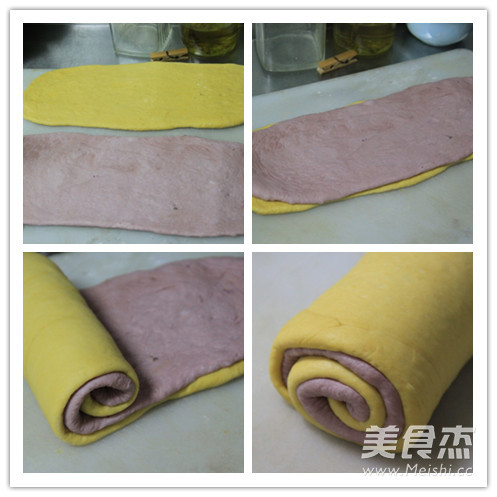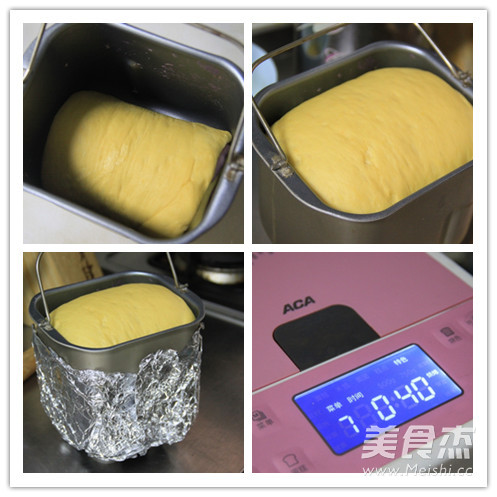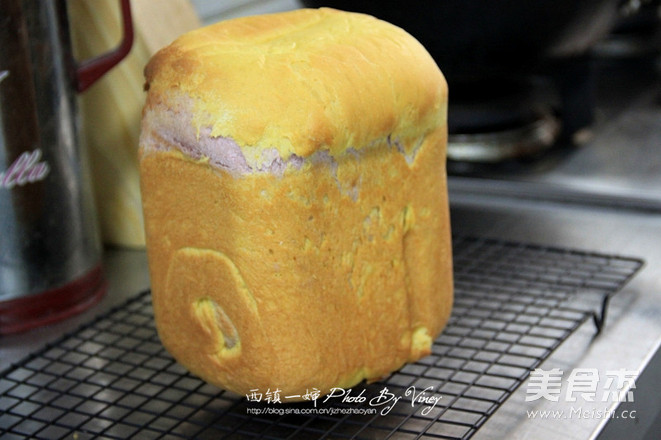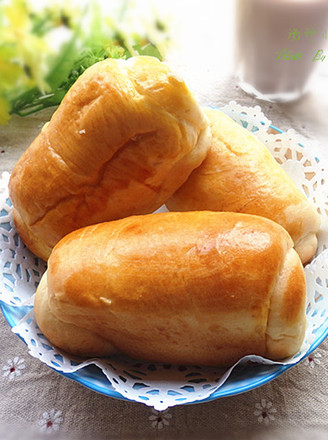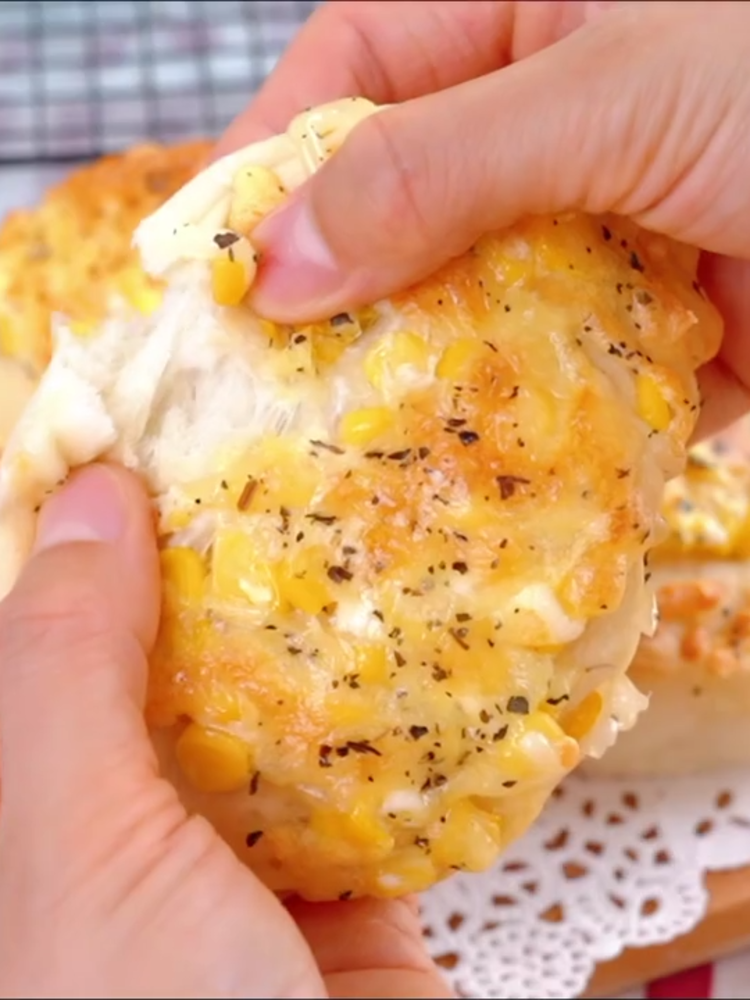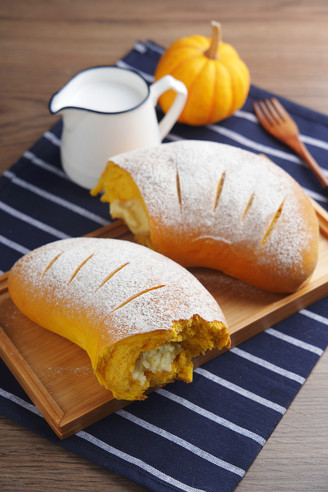Purple Sweet Potato Pumpkin Toast
1.
First steam the purple sweet potato and pumpkin separately, and then use a spoon or a section of a rolling pin to press into a puree shape for later use
2.
After that, pour all the dough materials into the bread bucket, put it in the machine, and activate the kneading option to start kneading. Because there is very little water in the dough, you can take out the dough after you just barely knead it into one dough, and divide it into two evenly.
3.
Add pumpkin puree to one part and continue to knead the dough in the bread machine. You can see that the dough has turned yellow. The other part of the dough is also added with purple potato puree. Continue to knead, and then the dough becomes lavender. Each dough must be kneaded until it can pull out a large piece of film, and the edges are very smooth when it breaks.
4.
After that, put the two doughs in a warm and humid place (about 28 degrees, humidity 75%) for basic fermentation until they are twice the original size. I put it in the bread bucket and covered it with a layer of wet gauze to send it. In summer, the temperature is high, so the fermentation does not need to be two hours like in winter. It is estimated that it will take a short time. After that, take out the two doughs and press them first to capture the fermented gas in the dough.
5.
Then roll the two dough pieces into a rectangular-like dough sheet and then stack the two dough sheets. I hug the purple potato dough with pumpkin dough. You can also do the other way around, roll it up from one side and roll it into a circle. Shaped dough roll, tighten and glue the bottom edge
6.
After that, the dough is fermented for the second time, and it is about 8 minutes full of the bread bucket. After that, wrap a layer of tin foil around the bread bucket. This is to cut off some of the heat when it will bake. Make the crust of the bread too dark and the taste is too hard, then put the bread bucket back, select the baking mode, it takes about 40 minutes, and then start the program, what should you do?
7.
After the bread is baked, immediately put on the gloves and lift the bread bucket out, and then release it from the mold.
8.
Leave it for about two hours, wait for the sour gas in the bread to evaporate, then slice it or tear it up and eat it. When you don’t eat it, remember to put it in a fresh-keeping bag to avoid moisture loss and bread aging

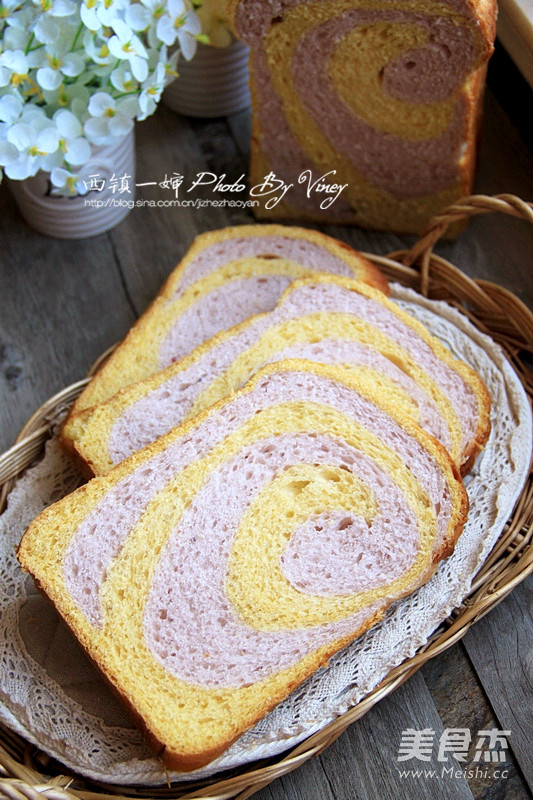
Tips:
A few words
1 It is hot in summer, so I always leave the lid of the bread machine open when kneading, and the basic fermentation is enough for one hour.
2. The amount of water added in the material is a reference value, because everyone’s purple potato puree and pumpkin puree have different water content, so when you first knead ordinary dough, you can add less water first, and wait for the purple potato puree and pumpkin puree to be added. , After the dough of the two colors are formed, look at the water absorption of the dough and then consider whether to continue adding water. The best condition of the dough is just slightly sticky.
3. A good toast is to be tall and straight. If your toast is not long or has a rough texture, first, see if your instant dry yeast has expired.
Second, is the temperature too high and the time too long during the basic fermentation? If the power of the yeast is exhausted on the first serve, then the second serve generally has no strength to grow.
4. It is recommended to wrap the last layer of tin foil. The bread machine is not like an oven. There is a large space for the heat to be evenly distributed. Whether it is a single-tube heating or a double-tube bread machine, it will be too close to the bread wall during baking, resulting in a darker shell and a hard texture after the moisture is dried. Look like. Wrapping tin foil is to isolate this part of the heat.
5. For basic fermentation and secondary fermentation, I put the dough in the bucket, then cover it with a layer of wet gauze and then cover the lid of the bread machine to increase the humidity. Basic fermentation is generally 28 degrees, humidity is about 75. The secondary fermentation temperature should be higher, and the humidity should be about 85%.

